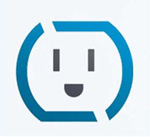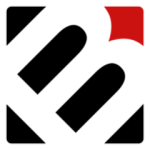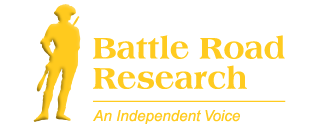Category: Stock Research
Opower: Providing Power to the People
 Based in Arlington, VA, Opower (NYSE: OPWR), provides cloud software to the utility industry. Opower’s software helps consumers gain insights into energy consumption, and ways to reduce energy costs. Founded in 2007, the company generated $89 million in sales in 2013, and operated at a $14 million loss. For 2014, Consensus estimates suggest the company will record $128 million in revenue and record a loss per share of $0.67. In 2015, revenues are expected to grow by 17 percent, and the company is expected to post a similar loss.
Based in Arlington, VA, Opower (NYSE: OPWR), provides cloud software to the utility industry. Opower’s software helps consumers gain insights into energy consumption, and ways to reduce energy costs. Founded in 2007, the company generated $89 million in sales in 2013, and operated at a $14 million loss. For 2014, Consensus estimates suggest the company will record $128 million in revenue and record a loss per share of $0.67. In 2015, revenues are expected to grow by 17 percent, and the company is expected to post a similar loss.
Opower debuted on the NYSE on April 3, 2014 in a 6.1 million share IPO, which opened at $19 per share, in a transaction that raised over $100 million for the company. The transaction was led by Morgan Stanley, Goldman Sachs, Allen & Company, Pacific Crest, and Canaccord Genuity. At a recent share price of $18.00, the company’s market cap. is about $880 million.
Opower sells software to public utilities which in turn provides their customers with important insights into their energy consumption and usage, including peak day alerts, consumption trends, and tips on how to reduce energy costs. Public utilities are under pressure from regulators to reduce the number of fossil fuel emitting power plants, utilize cleaner sources of energy, and reduce energy fees, in return for maintaining what is in many cases a near monopolistic position in the markets they serve. Public utilities, have, in a sense, been forced to expend some of their resources on energy efficiency programs through which they provide incentives to consumers to utilize more efficient methods for cooling and heating.
At the end of 2013, Opower served 93 utility companies in eight countries, including over half of the 50 largest utilities in the US. Recently, Opower launched a program at CLP Power Hong Kong, the country’s largest power company. In 2013, customer concentration was high, as Opower’s top 10 customers accounted for 62 percent of sales. Three of these customers—National Grid, Pacific Gas & Electric, and Exelon each accounted for more than 10 percent of sales. For the six months ended June 30th 2014, two customers each accounted for 11 percent of sales, so it would seem that customer concentration is beginning to decline.
Opower counts among its competitors privately-held Aclara and Tendril, as well as the Nest Labs division of Google. Post-IPO Opower has a strong balance sheet, with nearly $150 million in cash and no debt.
To learn how Opower screens against its cloud-based software peers in the Battle Road IPO Review Software coverage universe, please contact: info@battleroad.com.
Borderfree: Helping Companies Go Global
 Borderfree (NASDAQ: BRDR) provides cross-border ecommerce software and services for retailers and consumer brands to sell their products in over 100 countries. Founded in 1999, the company, formerly known as FiftyOne until 2013, generated $110 million in revenue in 2013, up from $81 million in 2012, and posted near break-even results for both years. Borderfree debuted on the NASDAQ on March 21, 2014 at an opening price of $16 per share, in a 5.8 million share IPO, which raised roughly $86 million for the company. The IPO was led by Credit Suisse, RBC Capital Markets, Pacific Crest, Canaccord Genuity, Needham & Company, and William Blair. At a recent share price of $15, the company’s market cap. is roughly $450 million. Borderfree offers software and services that enable US brands to sell their products in foreign markets, and handles the localized pricing, payment processing, customs clearance and brokerage, and landed cost calculations, among other functions. Over 90 customers ran 150 ecommerce sites utilizing Borderfree as the end of 2013. Borderfree boasts an impressive client list, which includes Dillards, Under Armour, Pac Sun, Aeropostale, Pottery Barn Kids, Barney’s, Bloomingdale’s, Guitar Center, Cabella’s and others. Borderfree’s challenges include scaling its business model from break even to a sustainable level of profitability. The company generates revenue in part as a percentage of its customers’ gross international sales volume. The company’s top three customers accounted for 25 percent of sales in 2013, and the top 10 customers accounted for 60 percent, although none accounted for 10 percent or more. Following its IPO, BRDR has a strong balance sheet with over $120 million in cash and no debt, and appears, on paper, to have bright prospects ahead.
Borderfree (NASDAQ: BRDR) provides cross-border ecommerce software and services for retailers and consumer brands to sell their products in over 100 countries. Founded in 1999, the company, formerly known as FiftyOne until 2013, generated $110 million in revenue in 2013, up from $81 million in 2012, and posted near break-even results for both years. Borderfree debuted on the NASDAQ on March 21, 2014 at an opening price of $16 per share, in a 5.8 million share IPO, which raised roughly $86 million for the company. The IPO was led by Credit Suisse, RBC Capital Markets, Pacific Crest, Canaccord Genuity, Needham & Company, and William Blair. At a recent share price of $15, the company’s market cap. is roughly $450 million. Borderfree offers software and services that enable US brands to sell their products in foreign markets, and handles the localized pricing, payment processing, customs clearance and brokerage, and landed cost calculations, among other functions. Over 90 customers ran 150 ecommerce sites utilizing Borderfree as the end of 2013. Borderfree boasts an impressive client list, which includes Dillards, Under Armour, Pac Sun, Aeropostale, Pottery Barn Kids, Barney’s, Bloomingdale’s, Guitar Center, Cabella’s and others. Borderfree’s challenges include scaling its business model from break even to a sustainable level of profitability. The company generates revenue in part as a percentage of its customers’ gross international sales volume. The company’s top three customers accounted for 25 percent of sales in 2013, and the top 10 customers accounted for 60 percent, although none accounted for 10 percent or more. Following its IPO, BRDR has a strong balance sheet with over $120 million in cash and no debt, and appears, on paper, to have bright prospects ahead.
